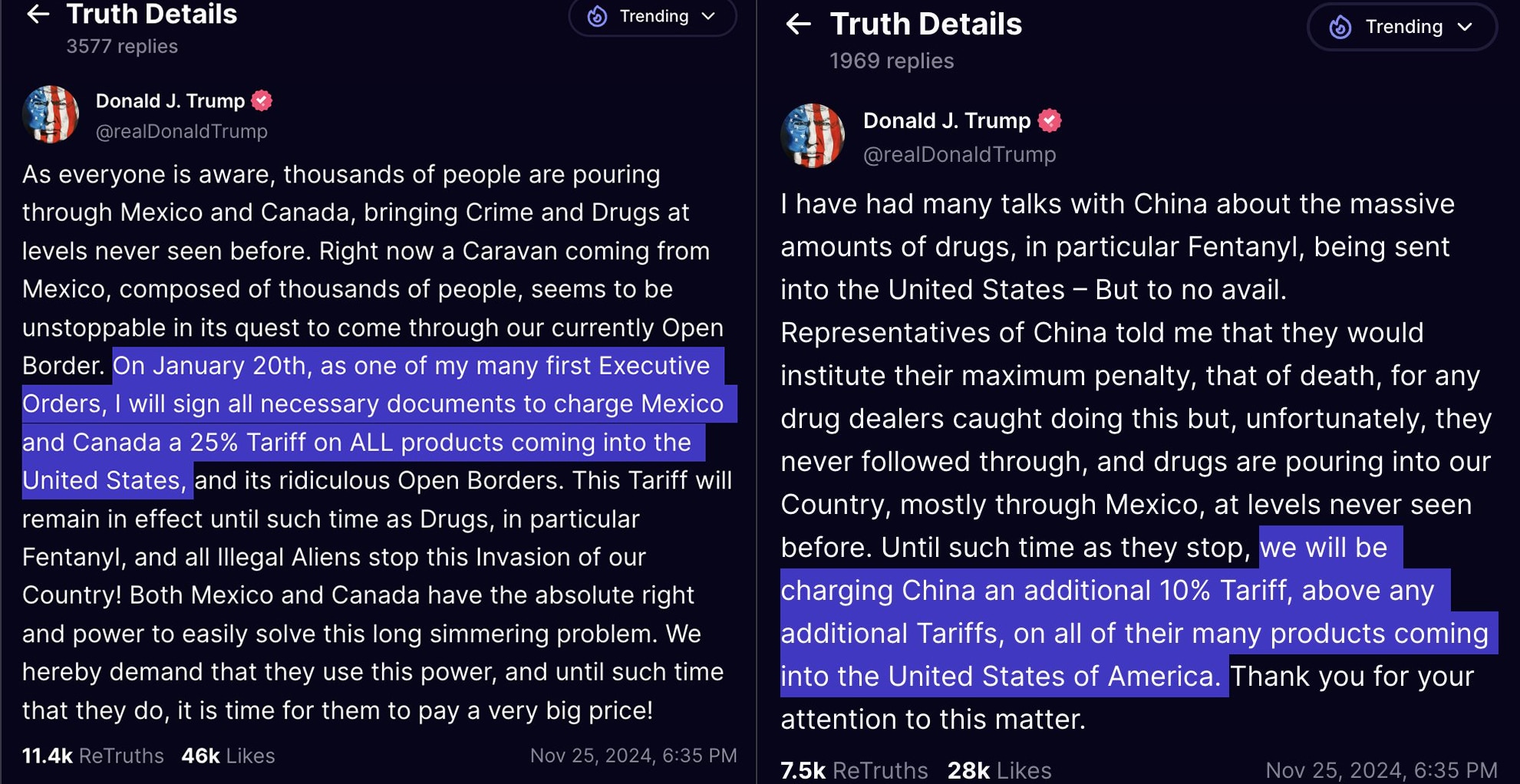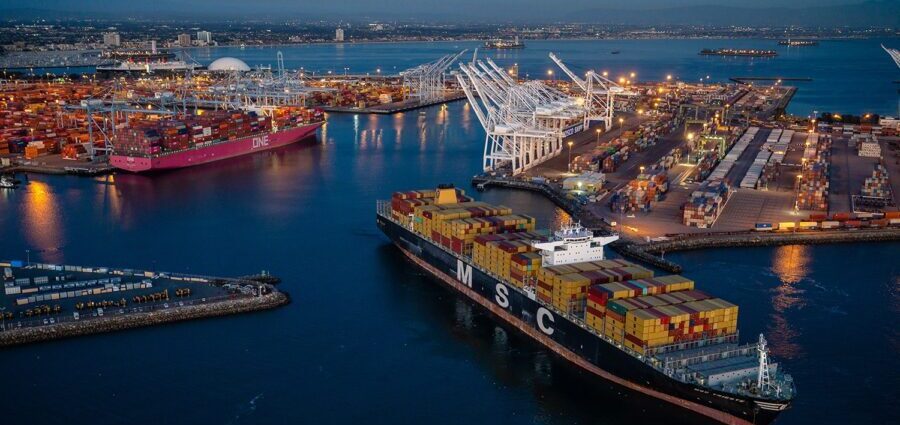On Nov. 24, President-elect Donald Trump announced plans to impose tariffs on the U.S.’s three largest trading partners — Canada, Mexico and China.
In a Truth Social post, Trump said that he would implement a 25% tariff on imports from Canada and Mexico until both countries took stronger action against drugs, particularly fentanyl, and the flow of migrants crossing the U.S. border.
In a separate post on Truth Social, Trump announced “an additional 10% tariff” on imports from China. He had previously vowed to impose tariffs on Chinese imports exceeding 60%, which would be higher than those enacted during his first term.
See those posts below: (click on the image for a larger version)

In 2023, the U.S. comprised over 83% of Mexico’s exports and 75% of Canada’s exports.
As detailed by numerous news reports, Trump’s new tariffs could potentially violate the provisions of the U.S.-Mexico-Canada Agreement (USMCA). This trade deal, which Trump signed into law in mid-2020, went into effect in 2024 and maintained mostly duty-free trade among the three nations.
“Imposing tariffs on trade flows into the U.S. without first preparing alternative sources for the goods and services affected will raise the price of imported items,” High Frequency Economics Economists Carl Weinberg and Rubeela Farooqi told the Associated Press.
Related Posts
-
The company said it is preparing to adjust pricing and supply chains to mitigate the…
-
Hydraulic and pneumatic fitting distributor Brennan has established a local presence in Mexico to align…
-
The addition of electrical distributor Robertson Electric Wholesale will add 19 Canadian branches to Sonepar.





